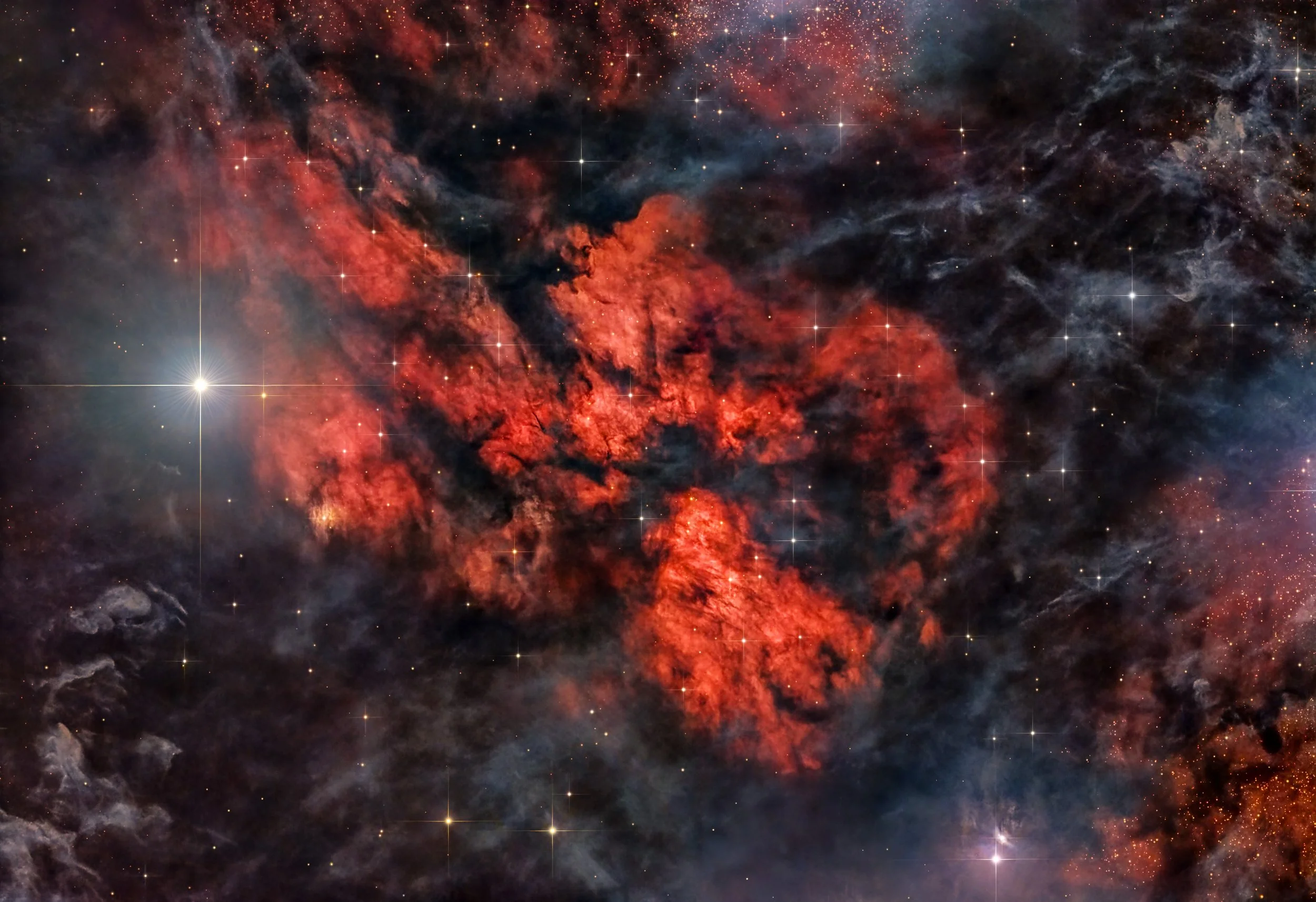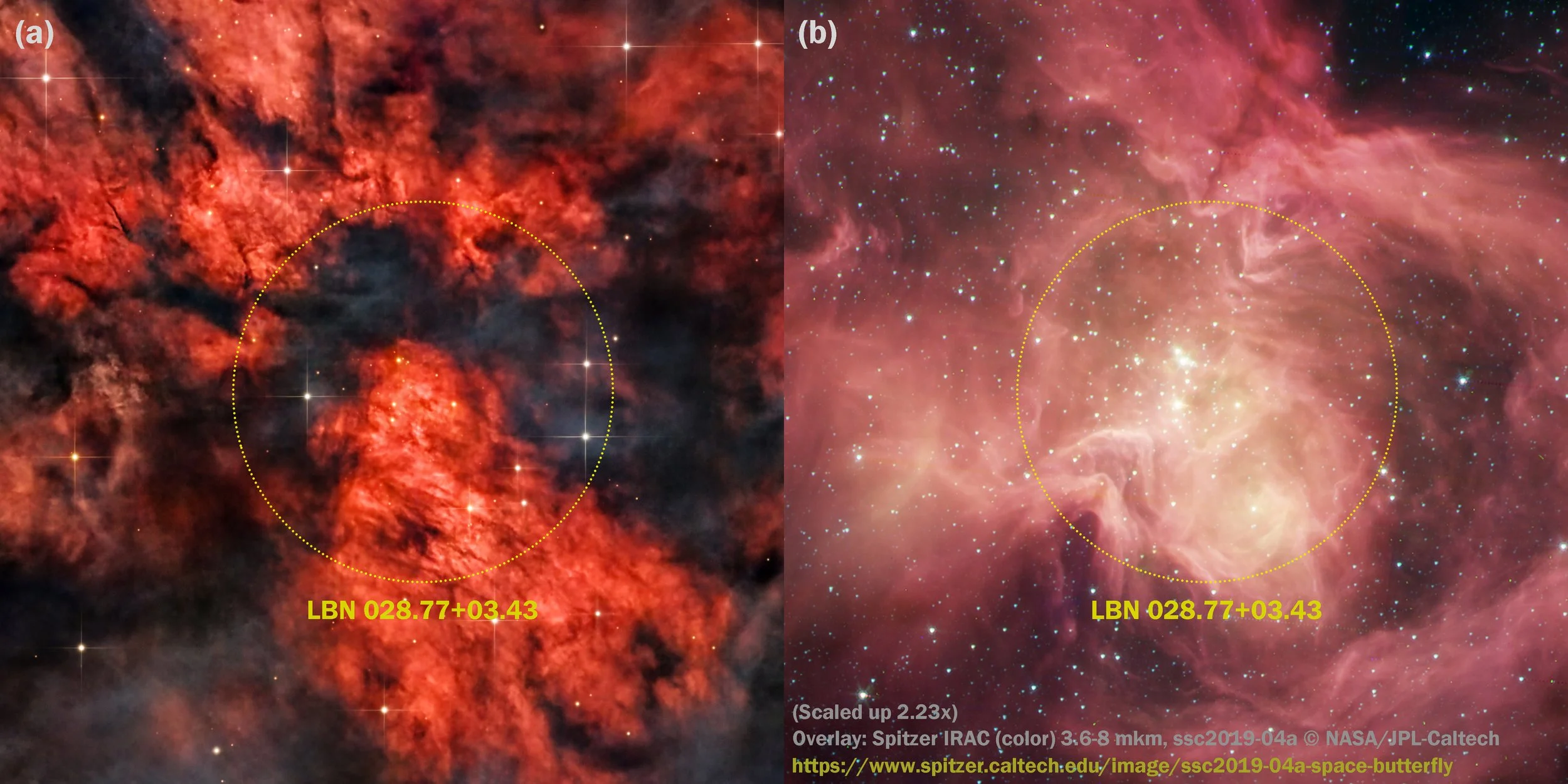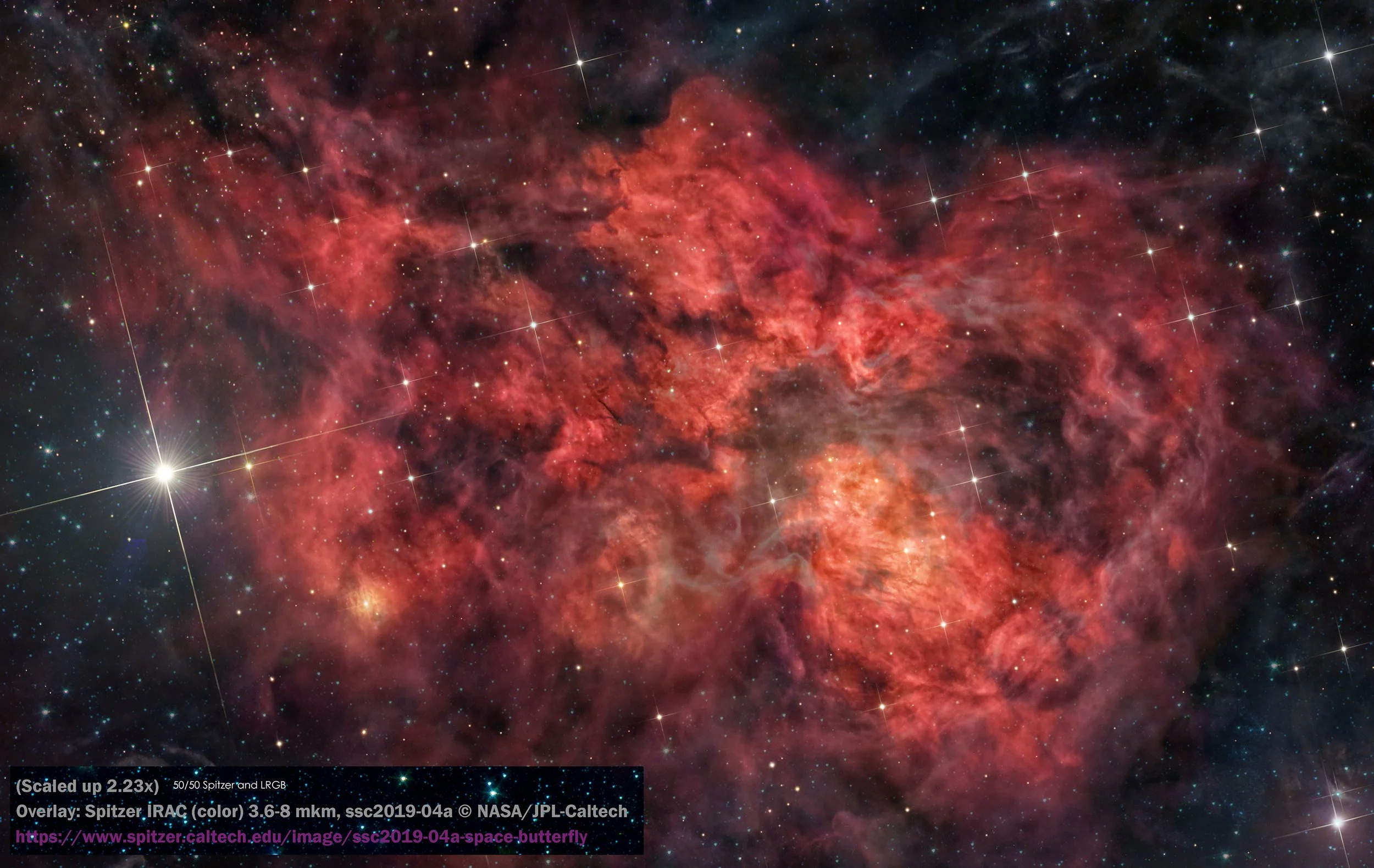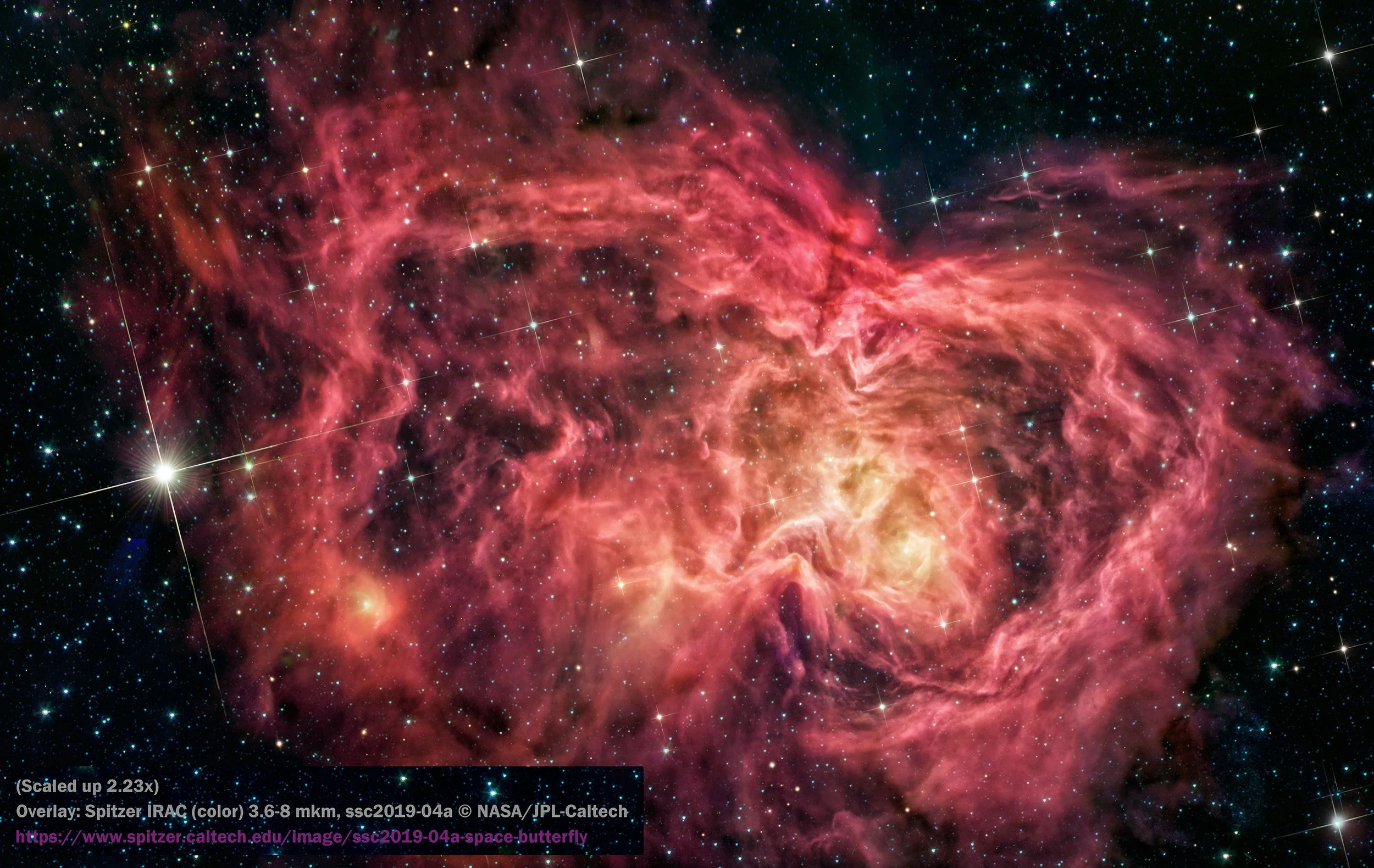RCW 174 star formation region in Serpens
Wonderful Description from: Alexander Zaytsev
RCW 174 (LBN 90, Sh 2-64, Westerhout 40, W40) [1, 2] is a nearby and well studied [3-8] active star formation region located at a distance of about 1400 ly. Its apparent diameter in the sky is 0.5 deg which corresponds to a linear size of about 12 ly at that distance. Numerous neutral gas clouds that are located at the distances as close as 850 ly belonging to the Serpens–Aquila Rift [9, 10] which extends over the range of distances from 750-1650 ly and alters the appearance of RCW 174 significantly in the visual spectrum compared to near-IR views [3, 4].
Several sub-regions of RCW 174 are of particular interest, such as the dense area surrounding star UCAC4 439-077030 [11] for which the Gaia DR3 [12, 13] parallax based distance estimate is 1661 ± 24 ly, so it is likely physically associated with the RCW 174 region. The Spitzer IR image [3, 4] reveals a system of bow shocks in the immediate vicinity of UCAC4 439-077030 [11], as illustrated in Fig. 1, even though its measured proper motion of 6.75 mas/yr corresponds to “only” 16 km/s per second of the linear speed, and the direction of motion is pointing away from those bow shocks. Thus, those shock fronts could be associated with one of the dimmer stars found in the vicinity. Two outflow structures MHO 3284 [14], MHO 3285 [15] are identified in this area in [16, 17] without pointing to a specific source for them.
The subregion of interest here is near the center of NAME W 40 star cluster [18] / LBN 028.77+03.43 HII region [19] that are hosting several OB stars and numerous young stellar object candidates embedded into a dense portion of a molecular cloud [20-22]. Once again the Spitzer IR image [3, 4] reveals a complex internal structure of that cloud, with a lot of density variation that is practically invisible in the visual spectrum - as shown in Fig. 2.
Fig. 1. Annotated version of our visible spectrum image (a) and Spitzer IR image [3, 4] (b) for the vicinity of UCAC4 439-077030 [11] shown in 200% of original resolution for (a) and 446% of original resolution for (b) to match the arc.sec/px scale of image (a).
Fig. 2. Annotated version of our visible spectrum image (a) and Spitzer IR image [3, 4] (b) for the vicinity of LBN 028.77+03.43 [19] shown in 100% of original resolution for (a) and 223% of original resolution for (b) to match the arc.sec/px scale of image (a).
[1] http://galaxymap.org/cat/view/rcw/174
[3] https://www.jpl.nasa.gov/images/pia23121-space-butterfly/
[4] https://www.spitzer.caltech.edu/image/ssc2019-04a-space-butterfly
[5] https://ui.adsabs.harvard.edu/abs/2010A%26A...518L..85B/abstract
[6] https://www.aanda.org/articles/aa/pdf/2010/10/aa14661-10.pdf
[7] https://arxiv.org/abs/1010.5434
[8] https://arxiv.org/pdf/1010.5434
[9] https://arxiv.org/abs/1610.03128
[10] https://arxiv.org/pdf/1610.03128
[11] https://simbad.u-strasbg.fr/simbad/sim-id?Ident=UCAC4+439-077030&NbIdent=1
[12] https://www.aanda.org/articles/aa/abs/2023/06/aa43940-22/aa43940-22.html
[13] https://www.aanda.org/articles/aa/pdf/2023/06/aa43940-22.pdf
[14] https://simbad.cds.unistra.fr/simbad/sim-id?Ident=%4011720049&Name=MHO%203284&submit=submit
[15] https://simbad.cds.unistra.fr/simbad/sim-id?Ident=%4011720050&Name=MHO%203285&submit=submit
[16] https://iopscience.iop.org/article/10.1088/0067-0049/219/2/21
[17] https://iopscience.iop.org/article/10.1088/0067-0049/219/2/21/pdf
[18] https://simbad.u-strasbg.fr/simbad/sim-id?Ident=NAME+W+40+Cluster&NbIdent=1
[19] https://simbad.u-strasbg.fr/simbad/sim-id?Ident=LBN+028.77%2B03.43&NbIdent=1
[20] https://academic.oup.com/mnras/article/436/4/3186/986021
[21] https://academic.oup.com/mnras/article-pdf/436/4/3186/3086854/stt1802.pdf
[22] https://heasarc.gsfc.nasa.gov/W3Browse/all/w40sfrcxo.html
Planewave 24" with Moravian C5 camera taken at Obstech, Chile
LRGB-Ha
Lum 30 at 600s, RGB 40 at 300s (for each channel), Ha 40 at 600s } for each pane of a 2-pane mosaic = 43h 20min of combined integral collected during the period of Jun 18, 2025 - Jul 2, 2025"
SWOS group: Mazlin, Parker, Forman, Magill, Hanson
Image Processing: Hanson Description: Alexander Zaytsev
Enjoy, Mark and Alex




